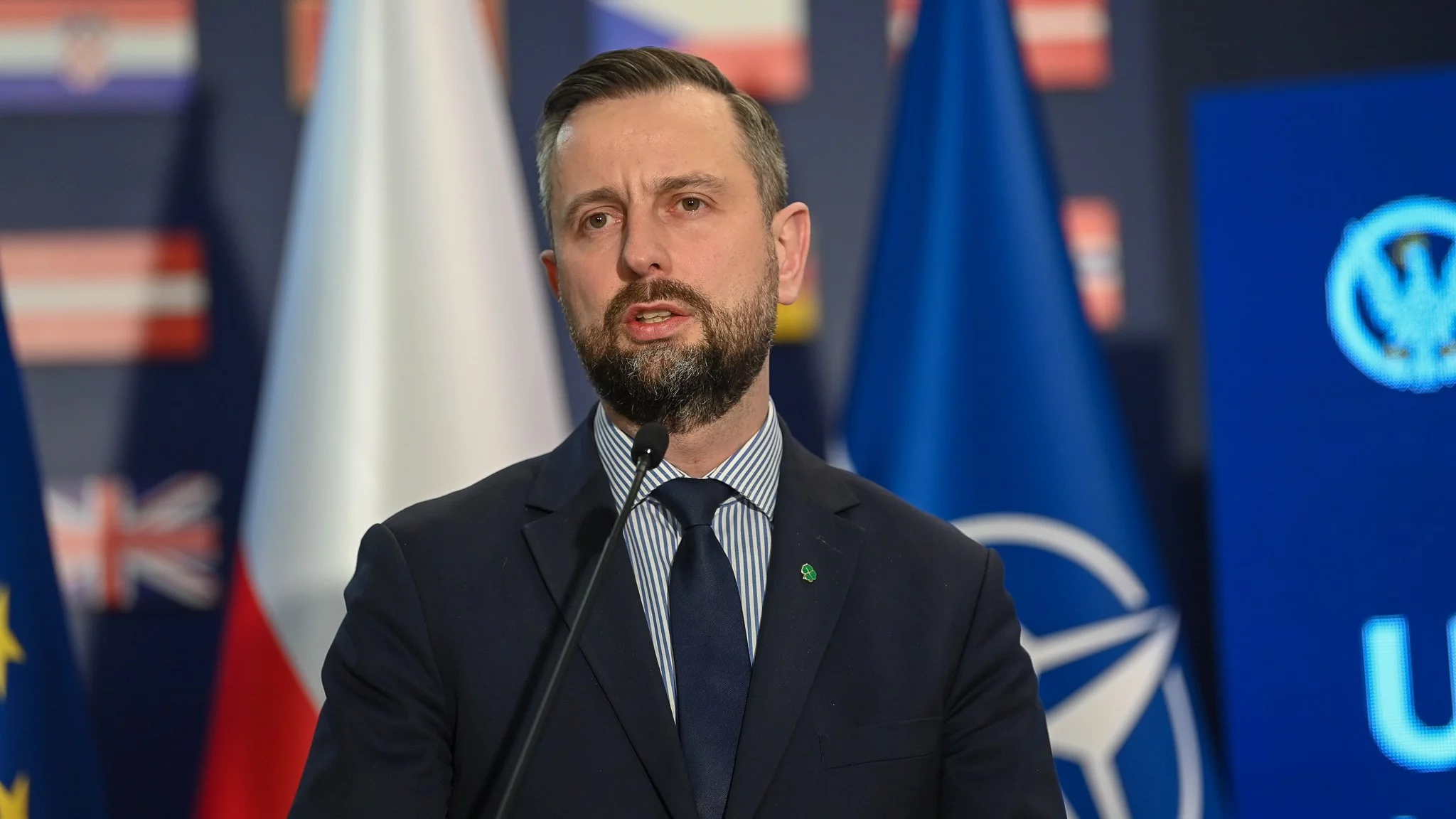This is the only crime laboratory in the Polish Army. He conducts biological research, including DNA, dactyloscopic or weapons and ammunition tests. However, he specializes in documenting crime scenes and analyzing them utilizing 3D technology. The analysis of the Crime laboratory of the Military Gendarmerie solves both military and police investigations.
A modern drone orbits Minsk Mazowiecki above the site where a fire broke out the day before. The ship-controlled specialists scan the area and on this basis will execute the 3D model of the burn. This will let them to analyse the scene in detail, aid find the causes of the fire and thus support the police investigation. That's 1 of the many things he does. Military Police Crime Lab. His experts and experts examine the evidence left at the scene and, on this basis, issue expert reports which are utilized in court proceedings. At the Biometrics and recognition Department, biological research, including DNA, dactyloscopic investigation is conducted, i.e. comparison of fingerprints, 3D reconstruction and printing research. The C-IED, Physicochemistry and Mechanoscopy plant specializes in the analysis of chemicals, as well as the investigating of weapons, ammunition and traces of tools. In turn, in the Department of Investigative Information and paper Research, manual writing, digital data media and authenticated papers are analysed.
Before the LKŻW was established, the evidence collected during proceedings conducted by the Military Gendarmery was sent to forensic laboratories, including the Police, which extended the time of preparation of the expert reports. The survey was besides commissioned to private companies, which in turn increased costs. “Now we are publishing opinions and expertise for the needs of not only HSC, due to the fact that we besides support another institutions, including the police, courts, prosecutors, the interior safety Agency or the National taxation Administration,” he says. Colonel Bartosz Klepczyński, LKZW manager.
Three-dimensional investigation
This year the specialists of the LCC have already developed over 100 opinions. A large part of them active documenting crime scenes and analysing them utilizing 3D technology. The laboratory is simply a specialist in Poland. – Thanks to scanners, both terrestrial and attached to drones, we registry the scene and then make its full digital model in 3D technology. Then you can go back to this place, analyse traces, execute measurements with accuracy of up to 3 cm and execute reconstruction of the course of events – explains young chor. Jan Kordaś, an analyst working on 3D technology.
As he adds, georadar is besides useful erstwhile searching and analyzing the site, which allows for non-invasive examination of the ground and detection of objects under its surface, and a lidar method (from LIDAR – Light Detection and Ranging). This is simply a method that allows to analyse the surface of the ground, even through dense vegetation, and make a precise map that shows, among others, all inequality. I've late utilized this map to identify a place for police in the woods where a criminal could hide a body. Unfortunately, no body was found in any of the indicated points, says young chor. Kordas. Experts from the LCC prepared expert reports in many investigations conducted by the National Police Office and police. They scanned, among others, the funnel after an detonation on a campfire in Ljubljana in March 2024. In the detonation Two soldiers of the 5th Chemical Regiment were killed. from Tarnowskie Mountains.
They besides participated in the search for Grzegorz Boris, a naval soldier who murdered his boy on 20 October 2023 and then hid in the Tri-City scenery Park. We utilized thermal cameras and drones at the time. Thermal imagination made it clear where the man was moving. The area there is wet and in the place where he set his feet, the ground bent, approached by water and these places became colder. “This helped to find the body of a man in a water tank,” says the analyst.
They besides usage 3D scanners in LKŻW to reconstruct road accidents. The MPs scanned the area, among others, after accident of wheeled armored transporter Rosomak, which during a training night ride on June 27, 2025 fell over on a cross-country exercise area in Załuski close Nidzica. A soldier of the 16th Pomeranian Mechanized Division was killed. “Unfortunately, more about this case, which is inactive going on, we can’t say,” reserves Mr Kamil Świderski, an analyst and an expert candidate in the field of reconstruction and expertise of road events. Its task is to find the causes of accidents and of the events to be caused. “I examine, among others, braking tracks, car inspection, and vehicle damage, on the basis of which I find the approximate velocity of the vehicle,” the Petty Officer states. As he adds, usually investigation material for the laboratory collects forensic technicians from the HSC wards, but sometimes you gotta go to the site and do specialized research.
Variations with a polygraph
Both young and young. Kordaś were police officers. The first 1 served in the traffic department, the second in the investigation and investigation department. As they say, they changed their uniform, looking for fresh challenges. From the police, and more specifically from the Central Crime laboratory of the Police, Lt. Anna Zielińska-Długosz besides came to WW, moving from polygraph studies. – The polygraph, besides called the polygraph in Poland, examines the physiological consequence of the human being. On this basis, it is possible to conclude with respect to his participation in the event," explains Lieutenant Zielińska-Długosz. It points out that the common name of the device ‘liability detector’ is not correct due to the fact that it is not able to separate the fact from the lie. The polygraph only records physiological reactions of the body of the subject. specified a survey must be approved, and its result may aid people wrongfully accused. “But before I conduct a study, I request to read the case files and on the basis of them I prepare questions that I discuss from the survey, due to the fact that it is not possible to surprise the subject during the test.” respective sensors are utilized to measurement breath, electrical skin conduction, i.e. sweating, blood force and heart rate, and peculiar pads evidence movement. During the test, a graph is created on the computer screen reflecting the physiological responses of the subject. – Questions origin circumstantial reactions of the body, including increased force and sweating. It cannot be controlled, so it is impossible to deceive the polygraph – explains Lieutenant Zielińska-Długosz.
She adds that the most satisfying thing for her in this work is that she can aid innocent people who have been linked to the case for various reasons. "It is frustrating that law enforcement authorities inactive do not know adequate about printing research, which is constantly developing," the expert noted. At the same time, he stresses that experience and cognition of the polygrapher are needed to decently interpret the results. besides in the case of examination of papers of the final result, the cognition and efficient eye of the expert decide, and their analysis requires many hours of laborious work. Marek Szczepanski, who has over 30 years of experience as a police expert, is active in this. Now retired, he came to work at the E.R. His task, however, is not to survey the graphic, or to read the character of a individual on the basis of his writing. The laboratory carries out examination of the alleged classical and method documents.
The first responds to the question whether the handwritten letter was drawn by the individual indicated. – Each of us has an individualized way of writing, and I analyse a group of these features, including the construction of signs, the way of moving lines or the size of letters – Szczepański mentions. To find whether a paper was written by a person, you request a comparative material that can be derived, for example, from a note drawn up at the request of the police or a handwritten passport application.
In turn, method investigation consists in determining the authenticity of the document. A video spectrocomparator is useful here, which, thanks to various light sources, including ultraviolet and infrared, shows hidden on the safety document, traces of deleted subtitles or text on them. – Forgeries can be seen on the hand – pointed Szczepanski.
Heroes of the novel
The laboratory besides performs chemical investigation on explosives, fuels, alcohol, psychotropic substances. “We are examining their composition and possible falsifications in this respect,” says the disease. Łukasz Cisz, head of the C-IED Department, Physicochemistry and Mechanoscopy and expert in chemical investigation and explosive devices. A case he remembered? Discovering in the autumn of 2024 buried in the premises and collected in economical and residential buildings in 1 of the towns a full of more than 500 kg of explosives from planet War II. “This magazine impressed even the bomb squad,” says the disease. Quiet.
His task was to identify objects and substances whose form may indicate that they came from military explosives. “On this basis, I assessed the danger region and the anticipation of safely collecting batches of samples for testing,” adds the expert. The Petty Officer is passionate about his work, especially in the case of planet War II explosives research. As he says, it would not be possible to engage in investigation without a hobby that has been developed for 30 years related to the past of weapons and the education of explosives technology at the Warsaw University of Technology.
The lab's inactive developing. “We have the power to issue expertise in many areas of forensics, we are working on fresh ones all the time, so that our opinions are as comprehensive as possible”, said Colonel Klepczyński. There are plans to grow DNA testing, introduce tests on the substance of drugs in the blood and execute 3D models utilizing underwater drones. However, with the squad so active in their work, you can decision the mountains, which is why the scope of the work in the laboratory will be much larger soon.




![Nie spodobało się, iż nazwałam się imamką [Rozmowa z Seyran Ateş]](https://cdn.oko.press/cdn-cgi/image/trim=398;0;424;0,width=1200,quality=75/https://cdn.oko.press/2025/08/AFP__20170728__R207J__v1__HighRes__GermanyFranceReligionIslamMosque.jpg)
